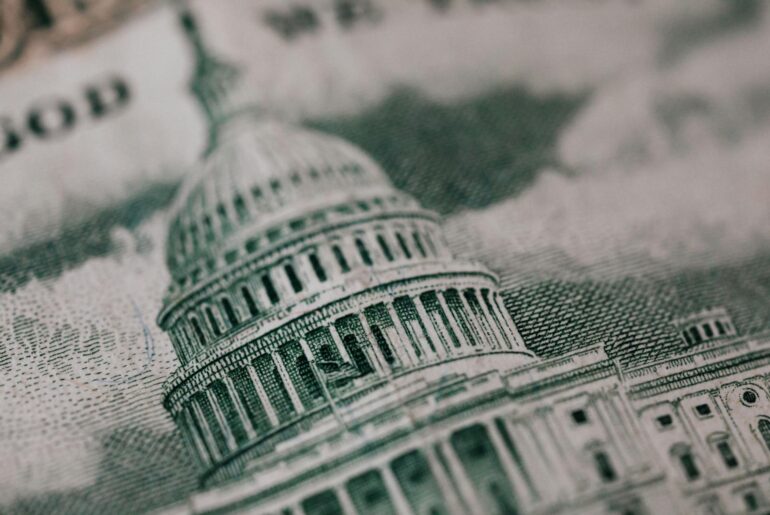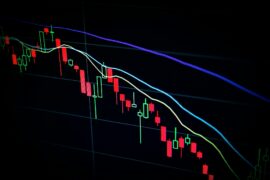This article may contain references to products or services from one or more of our advertisers or partners. We may receive compensation when you click on links to those products or services. Nonetheless, our opinions are our own.
The information presented in this article is accurate to the best of our knowledge at the time of publication. However, information is subject to change, and no guarantees are made about the continued accuracy or completeness of this content after its publication date.
A proposed federal spending package making its way through the House of Representatives has drawn widespread attention for its estimated $3.4 trillion impact on the national debt. The scope and ambition of this legislation are extensive, touching on healthcare, education, infrastructure, and social insurance, while sparking spirited debate about how such investments should be financed. Behind the headlines, the proposal presents a complex financial landscape that could influence everything from consumer borrowing to national credit markets. Below is a closer look at how the legislation could affect economic conditions and household stability if enacted in its current form.
- What the Spending Plan Includes
- How National Borrowing Works and Why It Matters
- Current Fiscal Conditions
- Possible Economic Impacts
- Alternatives to Debt-Heavy Funding
- Public Sentiment and Legislative Outlook
- Monitoring the Economic Signals
- Weighing Risk Against Potential Return
- Frequently Asked Questions
- Recommended Reads
What the Spending Plan Includes
The proposal outlines wide-reaching funding commitments intended to reshape public services and strengthen long-term economic prospects. Some of the major allocations include:
- Expanded access to healthcare and public health funding
- Federal support for higher education and student debt relief
- Investment in transportation infrastructure, energy resilience, and broadband access
- Adjustments to Social Security and safety net programs
While proponents of the bill suggest that these investments may yield productivity and equity gains over time, the legislation is expected to add significantly to the federal deficit unless accompanied by substantial revenue increases or spending offsets.
How National Borrowing Works and Why It Matters
Government borrowing differs fundamentally from household debt. When a government runs a budget deficit, it issues Treasury bonds, essentially borrowing money from investors in exchange for a promise to repay with interest. These bonds are considered low-risk and are widely held by domestic and international institutions.

However, the scale of borrowing matters. Larger deficits increase the volume of bonds in circulation, potentially affecting borrowing costs and capital allocation across the broader economy. While some economists argue that borrowing to fund productive investments can deliver long-term returns, others caution that expanding the deficit in an inflationary and high-interest environment can amplify financial risks.
Current Fiscal Conditions
The timing of this proposed spending package intersects with a challenging economic backdrop. The federal deficit in 2024 stood at over $1.5 trillion, with national debt nearing 120% of GDP, levels not seen since post-war America. Interest payments on the debt are now one of the largest federal expenditures, surpassing even defense spending. Adding $3.4 trillion in additional obligations raises questions about the sustainability of these commitments in an era of rising interest rates and uncertain market confidence. Investors may begin demanding higher yields on government bonds, which can cascade through the economy in the form of higher rates for mortgages, business loans, and consumer credit.
Possible Economic Impacts
Increased Interest Rates
When the federal government competes more heavily for borrowed capital, interest rates tend to rise. This can lead to:
- More expensive home loans, reducing affordability for first-time buyers
- Higher costs for business financing, potentially dampening job growth
- Elevated rates on credit card balances and personal loans
Pressure on Inflation
Increased government spending, particularly when not offset by new revenue, can raise demand in an already constrained economy. While infrastructure projects may take time to affect prices, more immediate transfers or subsidies can push up short-term consumption, increasing inflationary pressure.
Long-Term Fiscal Strain
Rising debt leads to greater interest obligations, which could crowd out future government spending on services. If growth does not keep pace with debt accumulation, policymakers may eventually face pressure to raise taxes or reduce spending, placing strain on future budgets and public expectations.
Voted "Best Overall Budgeting App" by Forbes and WSJ
Monarch Money helps you budget, track spending, set goals, and plan your financial future—all in one app.
Get 50% OFF your first year with code MONARCHVIP
Alternatives to Debt-Heavy Funding
Discussions around the bill have brought forward several alternative funding mechanisms:
- Adjusting tax policy to increase federal revenue, particularly among high-income earners or large corporations
- Reallocating existing budget lines, especially in underperforming or redundant federal programs
- Phased rollouts of certain programs to limit short-term fiscal pressure
Supporters of the bill argue that delaying action could result in greater long-term costs, especially in areas like healthcare or climate infrastructure. However, critics point to the need for greater spending discipline, particularly when future liabilities remain unfunded.
Public Sentiment and Legislative Outlook
The spending proposal has become a focal point for public debate around economic priorities. While many Americans support specific components, such as healthcare expansion or college affordability, there’s growing concern about national debt levels and the risk of inflation eroding wages and savings. As the bill moves through the legislative process, it may undergo significant revisions. Changes could include scaled-back provisions, alternative financing arrangements, or stricter oversight to monitor return on investment.
Monitoring the Economic Signals
In the months ahead, several indicators will help assess the economic impact of this legislation:
| Indicator | Why It Matters |
|---|---|
| Treasury Yields | Reflect investor confidence and anticipated inflation |
| Consumer Price Index | Measures inflation levels and purchasing power |
| Federal Reserve Policy | Signals how interest rates may shift in response to new spending |
| Employment Data | Helps gauge the labor market response to public investments |
These metrics will be important for anticipating how federal fiscal policy affects broader financial conditions.
Weighing Risk Against Potential Return
The proposed bill reflects a broader national conversation about what investments should be prioritized and how to finance them responsibly. While public investment has the potential to improve economic capacity, overreliance on debt carries well-known risks, especially if the returns on spending are delayed or diluted. Striking the right balance between ambition and sustainability will likely define the fiscal policy landscape over the coming decade.
Frequently Asked Questions
What does the $3.4 trillion figure represent?
It reflects the projected increase in the national debt if the spending plan is passed without offsetting revenue measures or spending reductions. Estimates have been circulated by independent analysts and budget watchdog organizations, though exact impacts may vary depending on final legislation.
Why is national debt a concern?
High levels of debt increase interest obligations and can limit the government’s ability to respond to future economic challenges or emergencies.
Will the bill cause inflation?
It could contribute to inflation in the short term, particularly if spending is concentrated in areas that boost consumer demand quickly. The longer-term effects depend on how well the spending enhances economic productivity.
How might the plan affect interest rates?
Increased borrowing may lead investors to demand higher yields on government debt, which can raise interest rates across the financial system.
Are tax increases part of the proposal?
There have been discussions about adjusting tax policies to help finance the bill, but specific provisions would depend on legislative negotiations.
How can I stay informed?
Monitoring updates from the Congressional Budget Office, the U.S. Treasury, and economic think tanks can offer nonpartisan insights into the bill’s potential consequences.

Reviewed and edited by Albert Fang.
See a typo or want to suggest an edit/revision to the content? Use the contact us form to provide feedback.
At FangWallet, we value editorial integrity and open collaboration in curating quality content for readers to enjoy. Much appreciated for the assist.
Did you like our article and find it insightful? We encourage sharing the article link with family and friends to benefit as well - better yet, sharing on social media. Thank you for the support! 🍉
Article Title: .4 Trillion Spending Plan Sparks Debt, Inflation, and Rate Concerns
https://fangwallet.com/2025/06/26/3-4-trillion-spending-plan-sparks-debt-inflation-and-rate-concerns/The FangWallet Promise
FangWallet is an editorially independent resource - founded on breaking down challenging financial concepts for anyone to understand since 2014. While we adhere to editorial integrity, note that this post may contain references to products from our partners.
The FangWallet promise is always to have your best interest in mind and be transparent and honest about the financial picture.
Become an Insider

Subscribe to get a free daily budget planner printable to help get your money on track!
Make passive money the right way. No spam.
Editorial Disclaimer: The editorial content on this page is not provided by any of the companies mentioned. The opinions expressed here are the author's alone.
The content of this website is for informational purposes only and does not represent investment advice, or an offer or solicitation to buy or sell any security, investment, or product. Investors are encouraged to do their own due diligence, and, if necessary, consult professional advising before making any investment decisions. Investing involves a high degree of risk, and financial losses may occur including the potential loss of principal.
Source Citation References:
+ Inspo
Congressional Budget Office. (2025, June). H.R. 1, One Big Beautiful Bill Act (Dynamic Estimate) [PDF]. Retrieved from https://www.cbo.gov/publication/61486












































